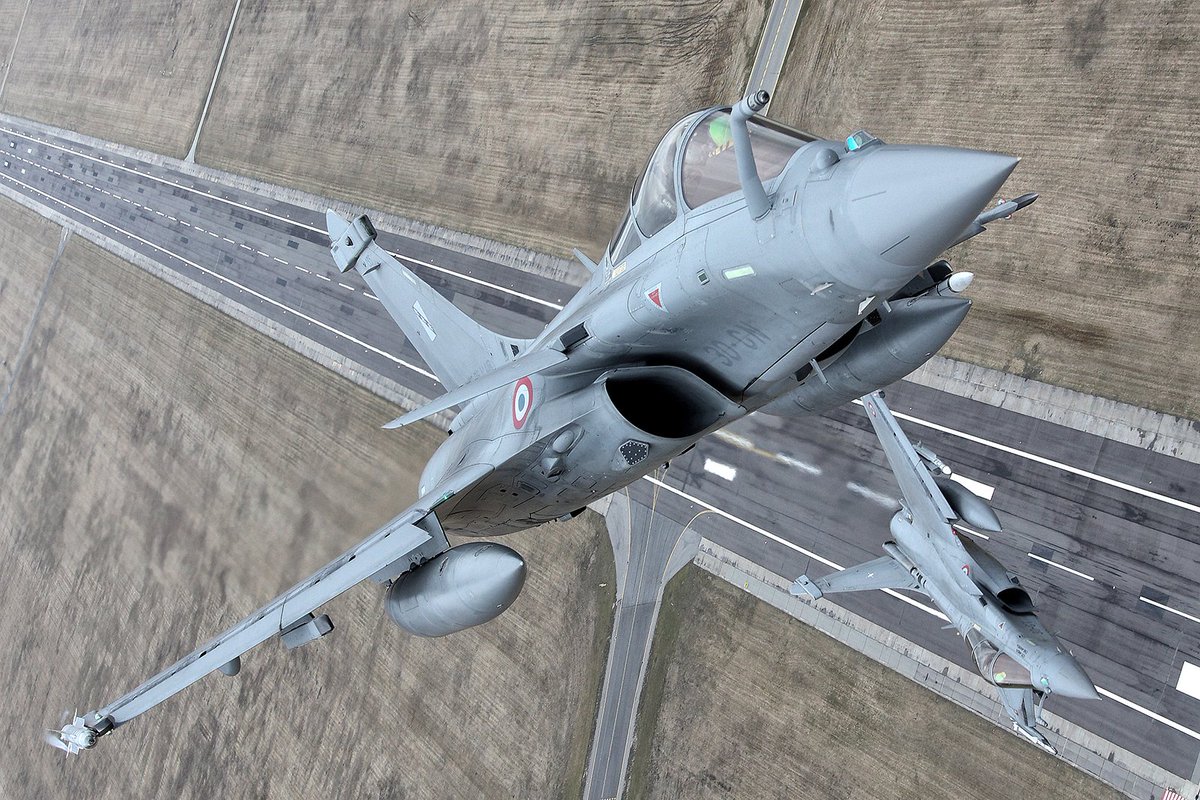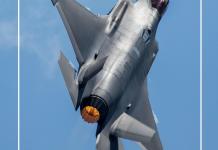The ‘Gust of Wind’ Rafale is turning into a tornado.
With the 5th generation fighter jet F-35 Lightning II out of their reach as the US doesn’t want to alarm its ally Israel, the Middle Eastern countries are showing interest in acquiring the French Fighter jets for their air forces. The latest Gulf Country to express interest in purchasing Rafale is Oman, strategically located near the Arabian Sea.
Bordering Yemen, Oman is vying to purchase Rafale fighter jets to strengthen its air power. Reports suggest that the Arab nation is looking to acquire 18-24 French fighter jets. Oman’s existing fleet comprises predominantly 24 F-16s and 12 Eurofighter Typhoons.
The Rafale’s versatility and advanced capabilities make it an attractive choice for Oman’s air force in the rapidly deteriorating security context in the region.
The ‘Rafale Club’ has been expanding rapidly worldwide, especially in the Gulf. After Qatar and the United Arab Emirates acquired the French Fighter jet, Oman has shown interest in the most advanced F-4 variant of Rafale. Negotiations have begun in this regard. Another Arab country, Egypt, also has Rafale in its fleet.
The United States’ reluctance to sell fifth-generation F-35 fighter jets to wealthy Gulf states has “created an opportunity” for Dassault Aviation to strengthen its position in the region with Rafale fighter jets. Israel has opposed the sale of F-35s to Middle Eastern nations as it would undermine its security doctrine of maintaining military superiority in the region.
Israeli security doctrine has long prioritized military superiority over its neighbors by either getting the most advanced military technology from the US or denying it to the countries in its neighborhood.
This meant Dassault Aviation’s gain. Rafale has become a “hot cake” in the region as countries make a beeline to acquire the fighter jet. Saudi Arabia is reportedly also considering acquiring Rafale jets. French media claim the world’s second-largest oil producer is looking to buy 100 French-made aircraft.
Qatar, which already has 36 Rafales in its fleet, has been looking to upgrade its existing fleet to the F-4 variant and is also looking to place an additional order of 24 fighter jets by 2025.
French Defense Minister Sebastien Lecornu confirmed this during his recent visit to Qatar, where defense leaders from both countries discussed at Dukhan Air Base, which hosts Qatar’s 36 Rafale jets.
According to the French newspaper La Tribune, the Gulf nation wants to upgrade its Rafale jets to the F4 standard, which is the latest standard and has only recently entered service with the French Air Force.
The French omni-role fighter jet Rafale struggled to find a buyer for a long time. Apart from the measly order from Egypt and Qatar, Rafale’s order book had nothing to boast about.
Rafale, which means “gust of wind” in French, failed to win contracts from Belgium, Brazil, Canada, Finland, Kuwait, Singapore, and Switzerland. Its high price tag has been a major deciding factor against it.
This, however, has changed in the last ten years, as Serbia will be the ninth user of Rafale fighter jets after the French Navy and Air Force, Egypt, Qatar, India, Greece, Indonesia, Croatia, and the United Arab Emirates (UAE).
France also hopes that Egypt will increase its Rafale fleet after it canceled the purchase of Su-35 jets from Russia. At present, Egypt already owns 54 Rafale fighter jets.
Mathieu Durand, a spokesman for Dassault Aviation, was quoted saying, “We thought light and multi-role would be easier to sell. [While it was] controversial at the time, it’s paying off now.” Not only are the French fighter jets’ existing users bumping up their orders, but they also have many potential customers, such as Oman, Saudi Arabia, Serbia, Malaysia, Iraq, Columbia, and Bangladesh.
When the Indian Air Force (IAF), the fourth largest in the world, chose Rafale over Eurofighter Typhoons in 2012, it caused a windfall of orders for the French combat jets. Since then, the UAE has signed a historic deal for 80 Rafales.
The aircraft development took a long time. The demonstrator flew on July 4, 1986. The program was officially launched in January 1988, the prototype took to the air on May 19, 1991, and the first Rafale F1 was delivered to the French Navy exactly a decade later, on May 18, 2001.

The F-4 Variant
The French Air Force began upgrading its Rafale jets to the F4 standard in 2019 for €1.9 billion.
Paris expects all of the Rafale fighter jets in its air force to be upgraded to the F4 standard. Qatar’s neighboring country, the United Arab Emirates (UAE), has also chosen the Rafale fighter jet for its air force, ordering 80 jets at the F4 standard.
In a press release, Dassault Aviation stated that the F4 standard marks a new leap forward after the F1, which was unique to the first French Navy aircraft; the F2, which has advanced air-to-ground and air-to-air capabilities; and the F3 and F3R, which have extended versatility.
A 2.3-billion-dollar contract was signed for developing the F4 standard Rafale fighter jet, which is expected to be validated by 2024. However, some functions will be available by the end of 2022, it was noted at the time.
The F4 standard will include upgraded radar sensors, front-sector optronics, and improved helmet-mounted display capabilities. The aircraft will be equipped with a new engine control unit.
The Rafale F-4 variant incorporates improvements to the Thales RBE2 active electronic scanned array (AESA) radar. This radar system enhances situational awareness, target detection, and tracking capabilities. The F-4 variant features enhanced front-sector optronics, contributing to better target identification and surveillance.
The F-4 standard enables the Rafale to carry new weaponry, including the Mica Next-Generation (NG) air-to-air missile and the 1,000 kg Sagem Armement Air-Sol Modulaire (AASM) modular air-to-ground precision weapon.
The Rafale F-4 variant also features a radar-absorbent coating, an adjusted fin-fuselage junction, and specialized adaptations for precise takeoffs and landings on aircraft carriers. Its strengthened airframe, longer nose landing gear, and tailhook between the engines ensure optimal carrier-based operations.
- Ritu Sharma has been a journalist for over a decade, writing on defense, foreign affairs, and nuclear technology.
- The author can be reached at ritu.sharma (at) mail.com
- Follow EurAsian Times on Google News




